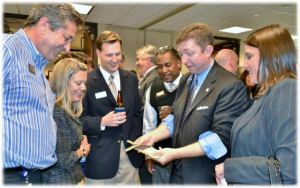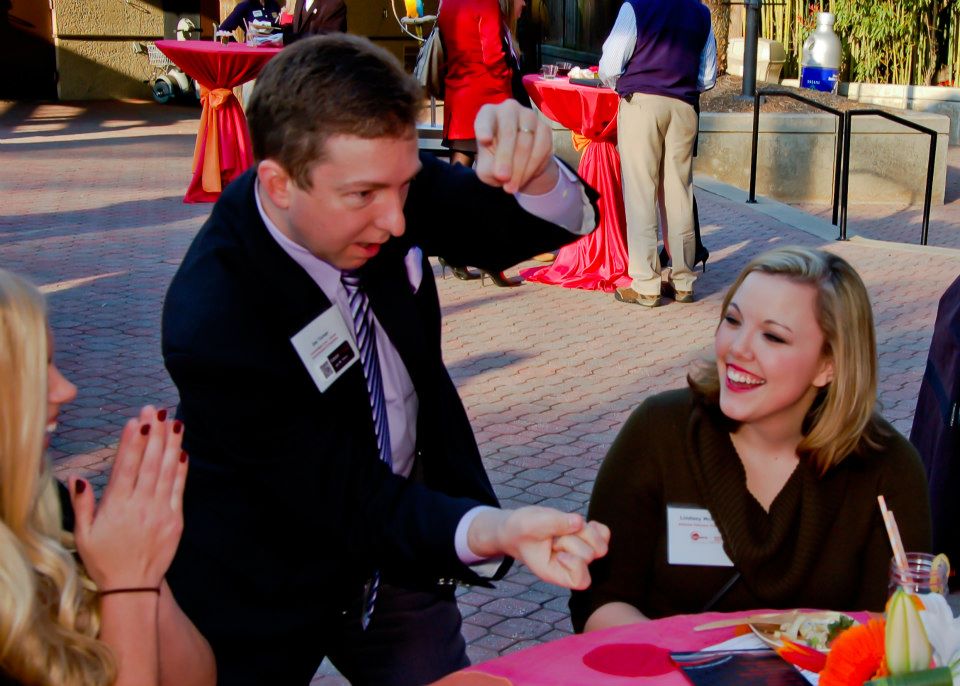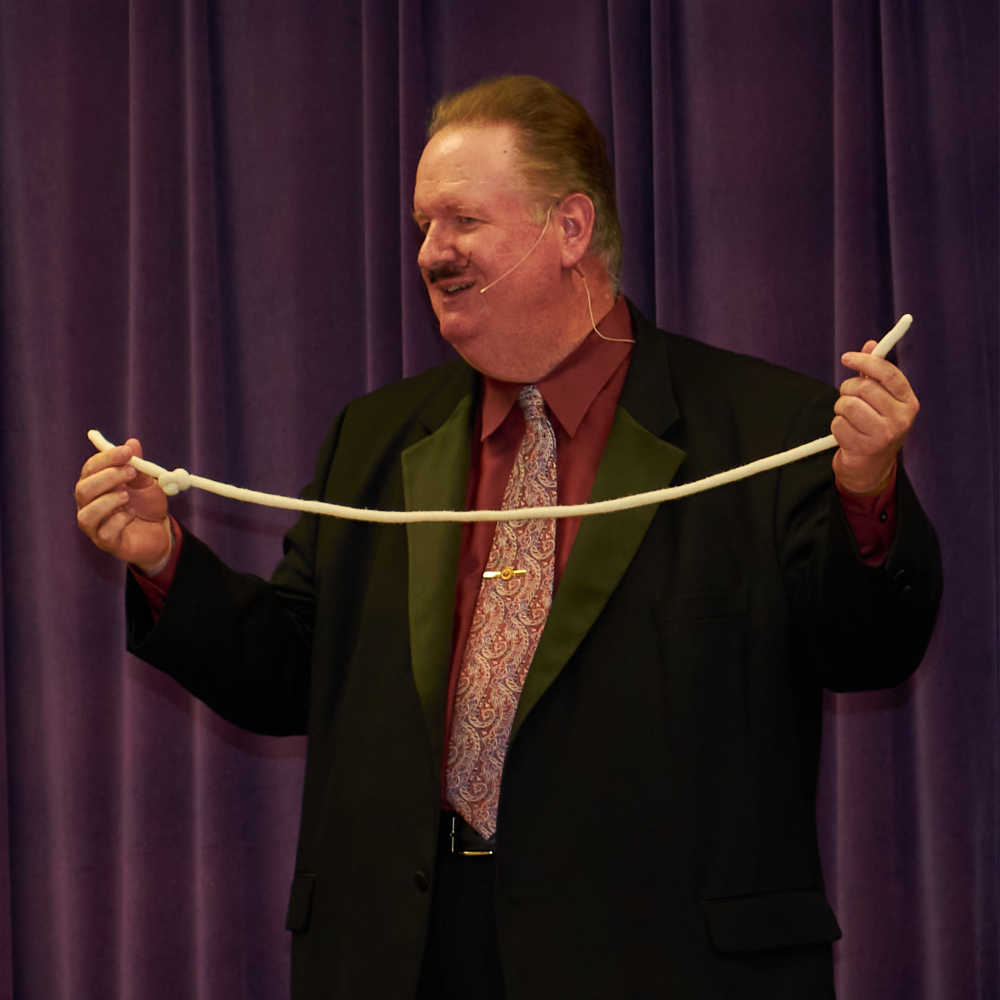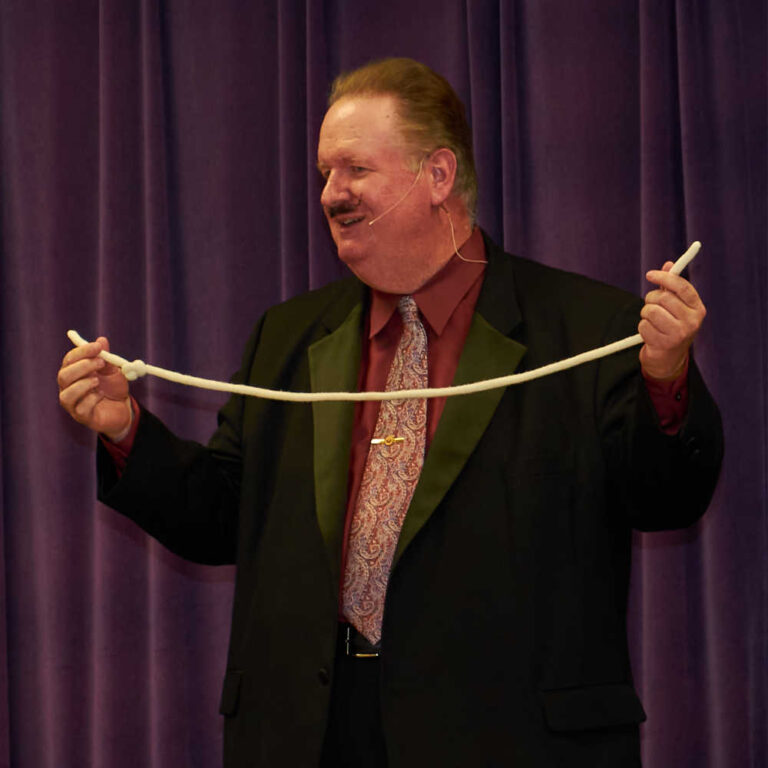Adding Interactive Magic and Mentalism to Group Receptions and Networking Events
Event planners and meeting planners face unusual challenges. One of these is the “networking event” or “welcome reception” – traditionally held on the first evening of a conference.

Magically enhancing the effectiveness of a large corporate hospitality event.
Imagine that you’re planning a meeting or conference that is going to draw people from around the nation or even around the world. In order to have an effective conference, these people need to meet and interact with others, hopefully creating new relationships and deepening existing ones. So, on the first evening, after everyone has arrived from the airport and checked into the hotel, we put them all in a room, give them some drinks, and hope that a sense of community starts to form.
Sometimes it happens by itself, at least in a limited fashion. Every group will include some individuals whose social skills and intuition will start to click and they’ll start to work the room. Generally speaking, though, most people find these events at least somewhat uncomfortable and awkward, and find it difficult to introduce themselves to new people or inject themselves into group conversations. Left to themselves, most attendees will cluster with people they already know, reducing the intended effectiveness of the event. These people often leave with the sense that the event was boring, pointless, and unsuccessful.
Interactive Strolling Entertainment and Group Dynamics
The addition of an interactive, mobile entertainer, particularly using magic and mentalism, changes the dynamic of these events in some important ways. We can look at those dynamics in three main ways: 1) how the performer relates to the participants, 2) how the participants relate to each other, and 3) how the event relates to the participants.
Strolling Magic: The Performer-to-Participant Dynamic
First, a skilled presenter of visual or psychological illusions is by definition giving people an unusual, out-of-the-ordinary experience. It is an automatic conversation starter, even among people who have never previously met. Just as shared experiences over time help to coalesce people into teams in the macro sense, these small shared experiences start to build community in the micro sense, facilitating interaction by giving the attendees an obvious and immediate topic on which to comment. As a performer, this “performer to participant” relationship is at the foundation of all my event goals – and it’s my challenge as an artist to deliver the highest quality, most entertaining illusions for the eyes and minds of the audience. Appealing, stunning, interactive mysteries create buzz and get people excited.
Strolling Magic: The Participant-to-Participant Dynamic

Strolling Magic: The Event-to-Participant Dynamic
Finally, there are some events and situations where the entertainment may have the additional objective of communicating some specific messaging about the event or organization. For example, a conference may wish to create anticipation about a surprise announcement to happen later in the convention – an unexpected guest, product launch, or special event. Perhaps there is a specific goal that the conference is either setting or celebrating. Maybe there is a specific key word or important number that the organizers want people to buzz about after the event. Or maybe the message is nothing more than, “We really want you to have a great time at this conference!”
My Goals for Strolling Magic and Mentalism Entertainment

“Message driven entertainment” takes many shapes, and I work with the conference planners to identify various solutions for each situation. The ability to design and deliver exciting and effective “event to participant” communications is a specialized skill that, in conjunction with a highly skilled performer, helps to ensure that the objectives for the event are achieved.
Each of these three relationships – Performer-to Participant, Participant-to-Participant, and Event-to-Participant – plays a significant role in the effectiveness of a group event or reception. Many performers and entertainers in this industry have a pretty firm grasp on how to relate to some audiences, such as children or casual gatherings. That is great for some events! The fact remains, though, that not all performers are equally experienced in relating to corporate groups. Once the element of corporate identity is introduced, then the entertainment stops being just a part of the event – it is now in some sense a reflection of the brand. Performers who have real-world experience interacting with corporate groups, speaking with executives and managers, leading teams, and representing brands have a value that goes beyond just the tricks.
What sets some performers apart then is not just mastery of the performance, but the ability to take it to the next level – and the next! – to ensure that the entertainment supports the overall objectives and messaging of the conference or the event, to the appropriate degree.
Are you working on a meeting or conference that includes a group reception? Call me, and let’s work together to make it exceptional.







